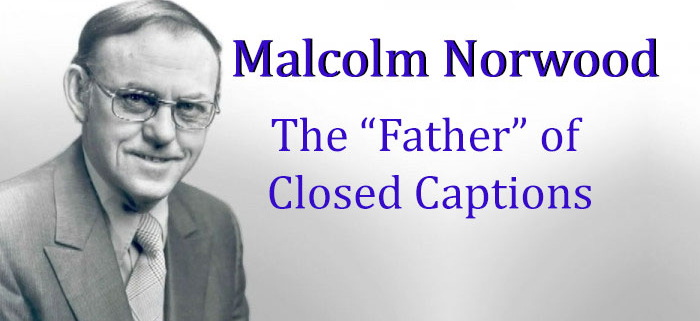A brief history of Closed Captions
It’s ironic that the first movies all had closed captions and now, over 100 years later, we’re finding our way back to them via subtitles on our TVs.
The Golden Age of Hollywood
Of course, those first movies had captions because they were silent movies, and people needed to know what was going on.
Exposition, locations and dialogue were all displayed between scenes to let the audience know what was happening in the plot, but when “Talkies” were introduced in 1927 with Warner Brothers’ The Jazz Singer, titles between scenes were unnecessary and died out within a couple of years.
This was the start of Hollywood’s Golden Age, but for Emerson Romero, it was the end of his career. Emerson, cousin of star Cesar Romero, was a deaf actor, who was now out of work.
Realising that the Deaf community was also cut out of the cinematic experience, Emerson began experimenting with ways to add text cards to movies and then rent them out to deaf schools and societies.
Although he is often credited with creating the first captioned film in 1947, unfortunately, Hollywood wasn’t interested.
A breakthrough in Belgium
IN 1949, a British film producer by the name of J. Arthur Rank devised a way to show captions on a smaller screen in the lower left-hand corner of the main screen. When this method was used in the movie Dawn Departure, it was reported that several hundred deaf people lined up to see the movie on opening night.
The real breakthrough in closed captioning came from Belgium, which involved etching captions directly onto a finished print of the film. This new technique was used to launch a small nonprofit company in America called Captioned Films for the Deaf.
For the next decade, this company captioned and distributed 29 educational and Hollywood films to schools for the deaf around the country, even finding support from Hollywood legend Katherine Hepburn.
Once again, Hollywood producers weren’t interested, even asking the Government to step in because of copyright and piracy concerns.
Congress joins the fight
It was only when the Government stepped in that real effort and money was thrown at the problem. After Congress passed an Act in 1958, a government agency was created to provide captions to movies.
The Captioned Films for the Deaf program was a huge success, thanks largely to the efforts of its director John Gough, but it was his successor, Dr. Malcolm J. Norwood, who is considered the “Father of Closed Captioning”.
A native of Hartford, Mac as he was known, was deafened at age 5 by measles and scarlet fever. He graduated from the American School for the Deaf in 1943 and taught at the Texas School for the Deaf after receiving his Masters from Hartford.
Mac joined John Gough’s staff in 1962 and eventually became its mainstay and leader, serving as its chief from 1972 until his retirement in 1988.
Closed Captions on TV
As television developed in the 1950s and 1960s, the deaf and hard of hearing were virtually ignored.
As the head of Described and Captioned Media Program (the renamed Captioned Films for the Deaf program), Mac became a leading advocate for the development of closed captioning on television.
He was singularly responsible for popularizing the captioning technique now used on TV, first with special caption decoders, and later integrated into the television circuitry.
Never has one person made a more positive contribution to the Deaf community when it comes to movies and television, and Malcolm “Mac” Norwood is rightfully remembered as the founder of closed captions.




Leave a Reply
Want to join the discussion?Feel free to contribute!